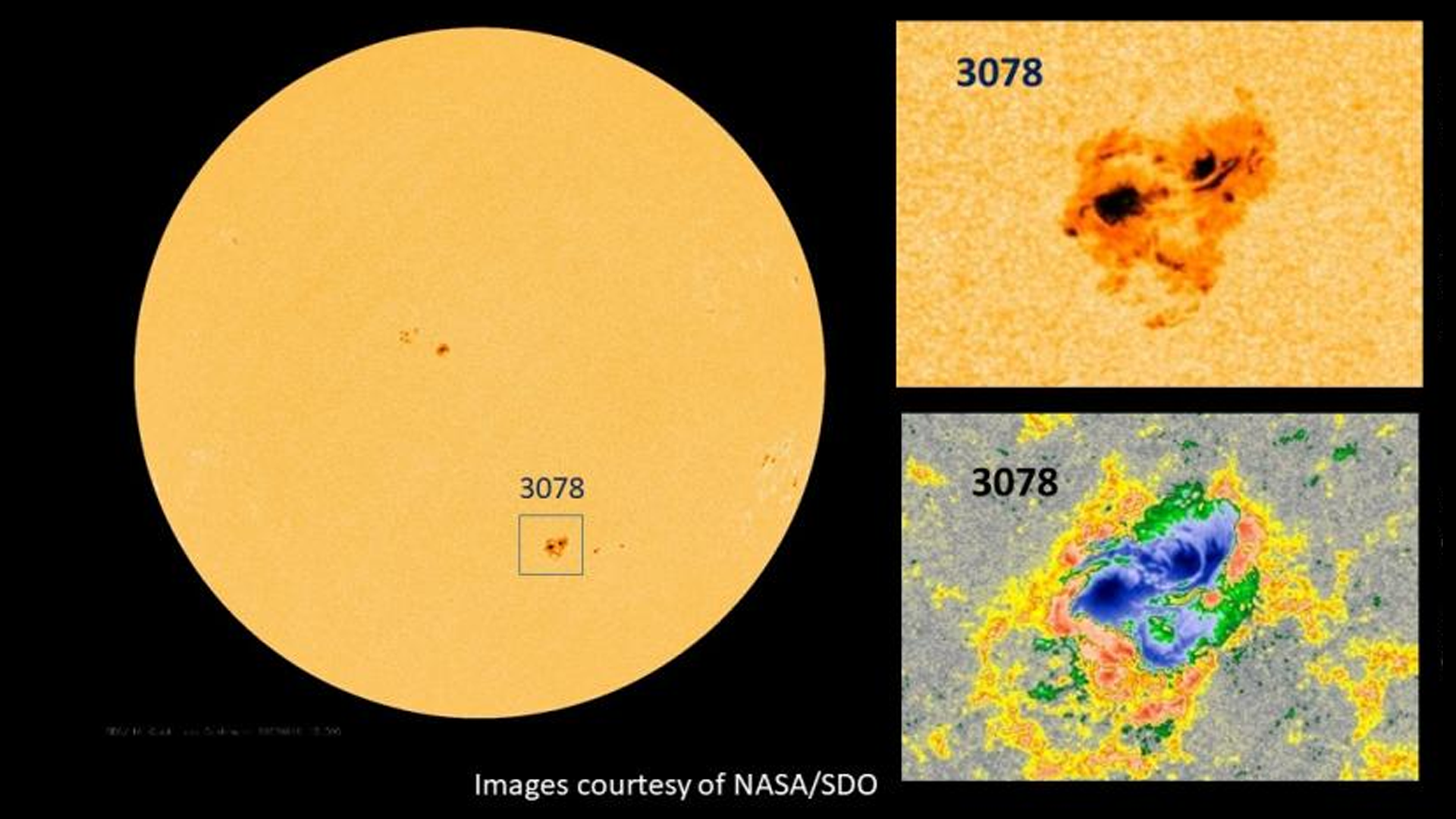Solar burst from 'hole' in the sun may trigger geomagnetic storms on Earth

An intense series of eruptions on the sun may trigger a strong geomagnetic storm on Earth Thursday (Aug. 18), spawning stunning aurora displays farther south of their usual polar regions.
The geomagnetic storm, a G3 category according to the U.S. National Oceanic and Atmospheric Administration (NOAA), will result from interactions between the strong solar wind blowing from a "hole" in the upper atmosphere of the sun, called the corona, and the Earth's magnetic field. The storm will get additional fuel from two coronal mass ejections (CMEs) that erupted from the sun earlier this week and are currently on their way to the planet.
Space weather forecasters are still waiting for the two CME's to reach NOAA's Deep Space Climate Observatory (DSCOVR) satellite, about 1 million miles (1.5 million kilometers) away from Earth toward the sun, to get an exact idea of the strength and direction of the magnetic field carried by those CMEs, NOAA said in a statement.
Related: Where to see the northern lights: 2022 aurora borealis guide
CMEs are bursts of magnetized plasma from the sun that escape from sunspots when the tense magnetic lines in these regions temporarily break. In the past week, space weather experts have seen multiple CMEs erupting from the sun, but most of them were not Earth-directed.
There are currently 10 active sunspots on the visible part of the sun, according to the U.K. weather forecaster Met Office, generating solar flares and CMEs. The two CMEs that are currently heading to Earth both burst from a "complex" sunspot, called region 3078 by NOAA. This region, located in the sun's southwest, is currently the largest and most active region on the visible disk of the sun and consists of "strong," magnetically complex spots, the Met Office said in the statement.
Solar flares are flashes of electromagnetic radiation that travel at the speed of light and can disrupt radio-communications on Earth. Unlike the CMEs, which take up to three days to arrive, there is no advance warning before the onset of the effects of solar flares.
Get the Space.com Newsletter
Breaking space news, the latest updates on rocket launches, skywatching events and more!
The space weather forecasters are also observing two coronal holes, from which solar wind escapes at high speeds. Coronal holes are regions in the corona where the sun's magnetic lines are disrupted, creating an opening from which solar wind can easily escape.

Despite all this activity on the sun, NOAA expects no major impacts on our technological world, as a G3 storm is still relatively weak. More potent storms, category G4 and G5, can cause power blackouts, disrupt satellite communication links and even destroy satellites in orbit.
In February this year, SpaceX lost a batch of 40 Starlink satellites after it launched into a relatively mild geomagnetic storm. Other operators of low Earth orbit satellites reported problems due to the sun's activity in recent months as the interaction of the solar wind with the upper atmosphere increases drag on the satellites, which then fall back to Earth faster.
Follow Tereza Pultarova on Twitter @TerezaPultarova. Follow us on Twitter @Spacedotcom and on Facebook.
Join our Space Forums to keep talking space on the latest missions, night sky and more! And if you have a news tip, correction or comment, let us know at: community@space.com.

Tereza is a London-based science and technology journalist, aspiring fiction writer and amateur gymnast. Originally from Prague, the Czech Republic, she spent the first seven years of her career working as a reporter, script-writer and presenter for various TV programmes of the Czech Public Service Television. She later took a career break to pursue further education and added a Master's in Science from the International Space University, France, to her Bachelor's in Journalism and Master's in Cultural Anthropology from Prague's Charles University. She worked as a reporter at the Engineering and Technology magazine, freelanced for a range of publications including Live Science, Space.com, Professional Engineering, Via Satellite and Space News and served as a maternity cover science editor at the European Space Agency.









